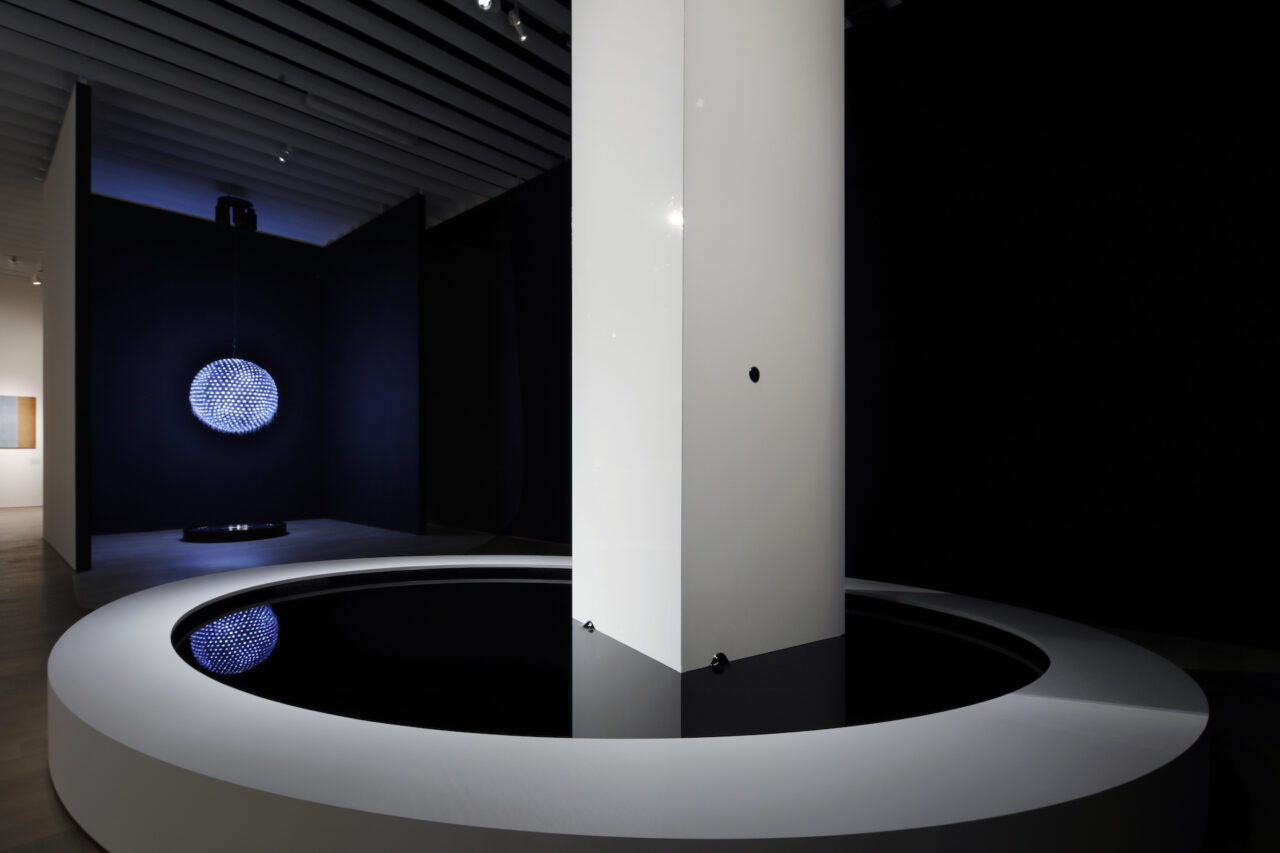RYOJI IKEDA
The Image & Sound Composer On His Most Comprehensive Exhibition In Asia To Date
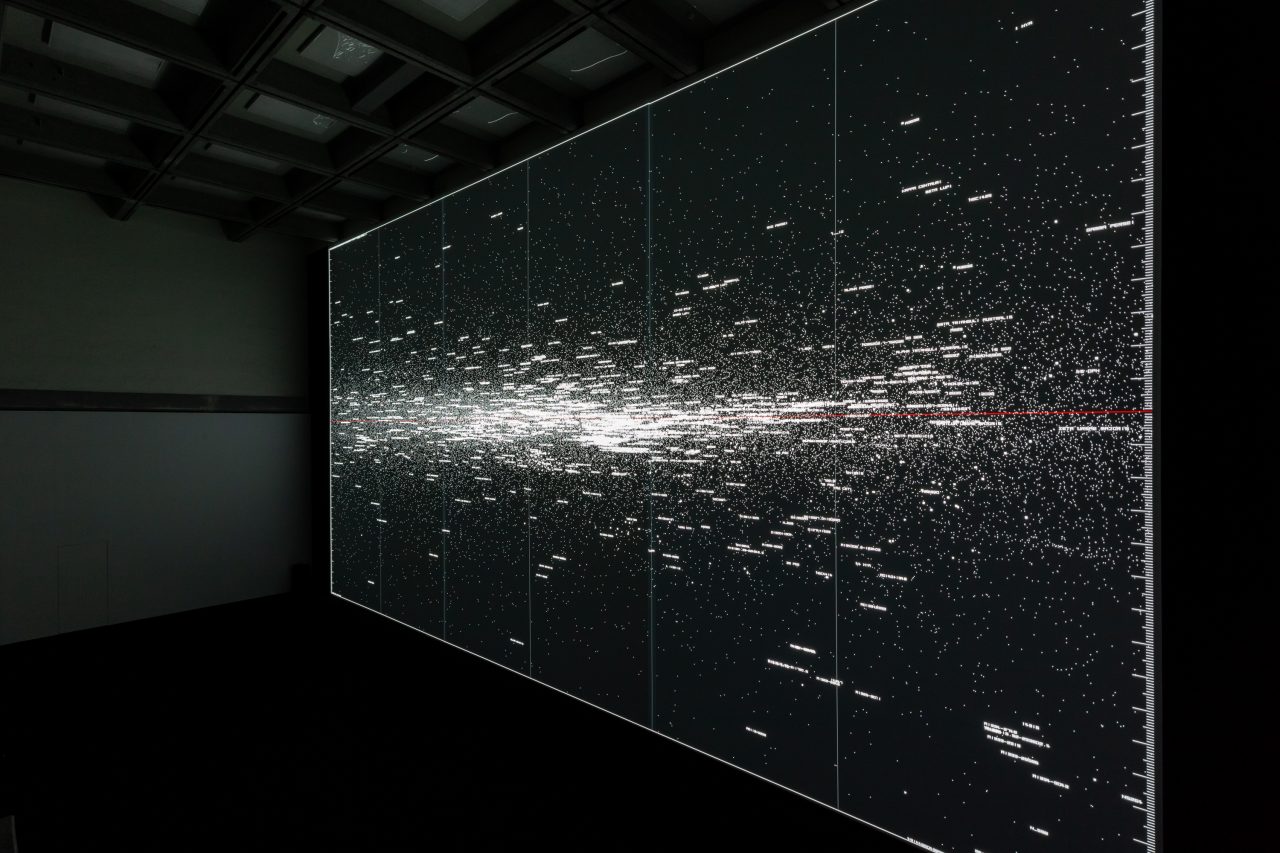
Taipei’s leading arts institution, Taipei Fine Arts Museum, unveils the solo exhibition of Japanese artist Ryoji Ikeda (池田亮司), the multi-media and multi-disciplinary artist known for his work that crosses data and information-driven immersive audiovisual installations, to sound sculptures and abstract test patterns. Each work holds a complexity in exploring ideas of mathematics and quantum theories, to the controllable and uncontrollable physical phenomena of sound, light, space and time.
In any way that his work can be interpreted, Ikeda explains that first and foremost he is above all, primarily a musician and composer. All the elements found in his work are just tools for his output, where their composition remains the vital key. “Sometimes I compose sound into music, but sometimes I compose dots and data into visual installations. In my works, the composition is the most important element.”
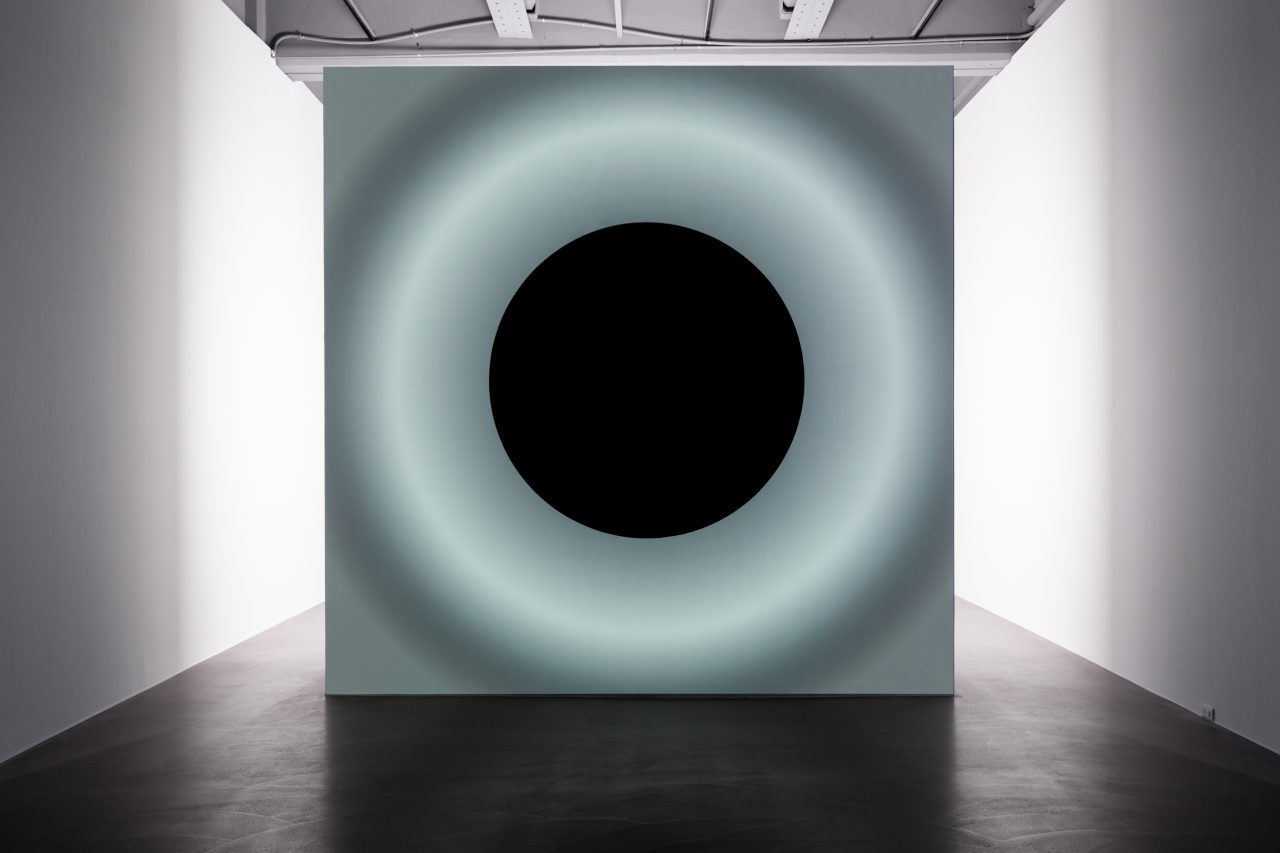
As the largest and most comprehensive exhibition of Ryoji Ikeda’s works in Asia since a decade, the museum hosts never-before-seen artist manuscripts to 2D sculptures, and his renowned audiovisual installations projected across 30-metre screens. At the core of his practice, Ikeda’s ongoing exploration of sound remains key. “What is sound?” is the fundamental concept that propels his exploration of vibrations, frequencies and white noise as he pursues to challenge the limits of human aural perception.
Curated by Taipei Fine Arts Museum Curator Jo Hsiao, and Guest Digital Media Curator Eva Lin, the multi-layered exhibition of the globally-renowned Japanese artist presents a new understanding of what is typically seen and traditionally perceived as art. Hailing from a digital media background, guest curator Eva Lin explains, “Ryoji Ikeda’s work allows you to see concepts you wouldn’t usually see, such as time.” In 2017, Lin had previously invited Ikeda to exhibit in a group exhibition situated in an abandoned factory in Taiwan. She then approached the museum in regards to presenting a larger presentation of his work in Taipei, where the current exhibition was born. Lin notes Ikeda’s core of mathematical concepts that propel his art, driven by a “digital heart” of sound. Lin notes the aural power of his work, “Even without understanding of digital media, you can enjoy it like a musical concert.” Fellow curator Hsiao affirms; “It’s about exploring the essence of the sound, and the purest sounds.”

One of Ikeda’s most recent works, a [continuum] (commissioned by The Vinyl Factory and The Store X in 2018) presents five large, super-directional Meyer SB-1 speakers in the museum entrance and lobby. Each individual black speaker presents a different vibrating frequency and “concert pitch”, relating back to the concept of the standard orchestral tuning pitch of “A”, which has notoriously never been precisely defined in music. As you remove your shoes and stand between these giant speakers and allow the sound to move through you, the sonic forms begin to create their own abstract harmony. It’s a perfect way for the museum’s guests to experience the multi-dimensional work of Ikeda without any preexisting knowledge. For him, it’s all about experience. “I don’t like the word ‘understand’ for art.” He explains. “Art is to feel, to experience. For example, when you go to a concert do you ask the meaning of the melody of Mozart? You go to enjoy, and can pursue your own meaning after. It’s exactly the same.”
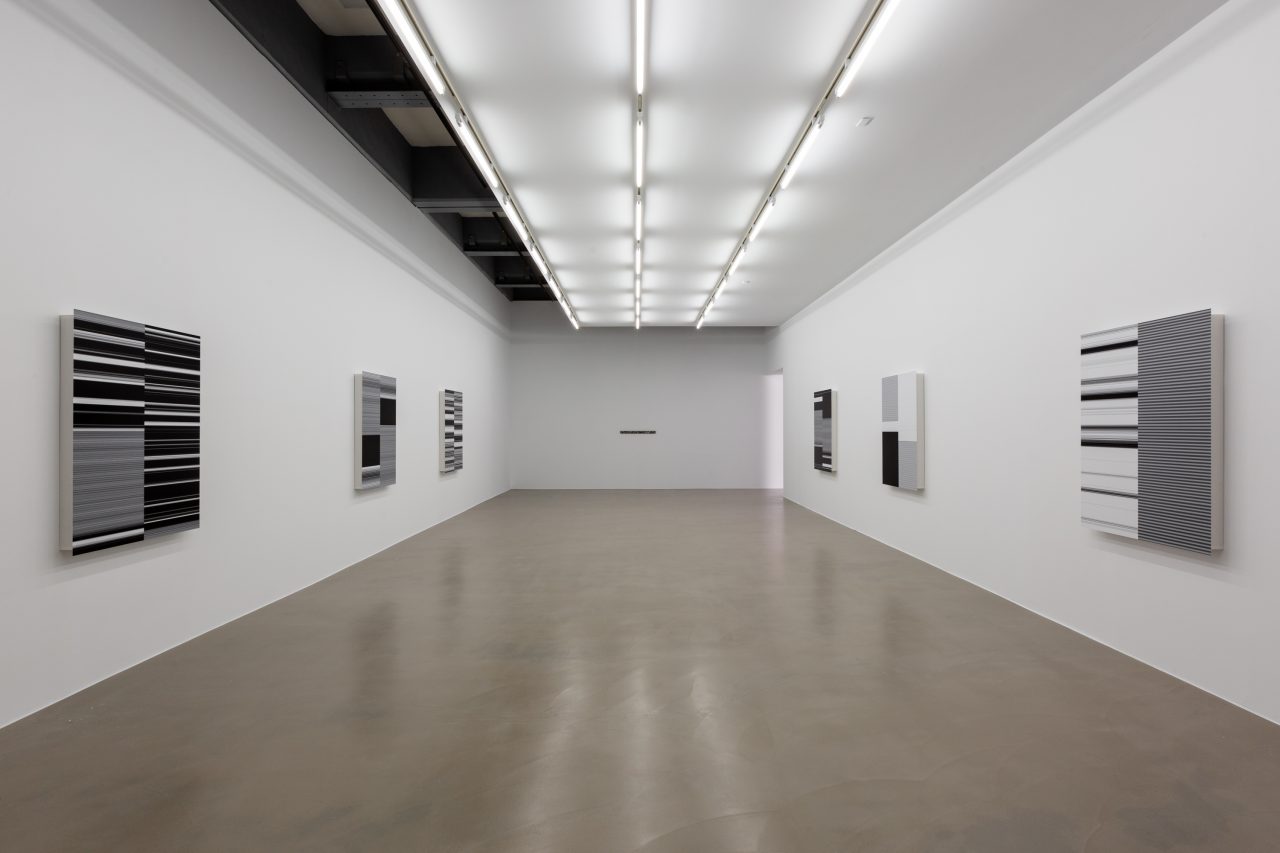

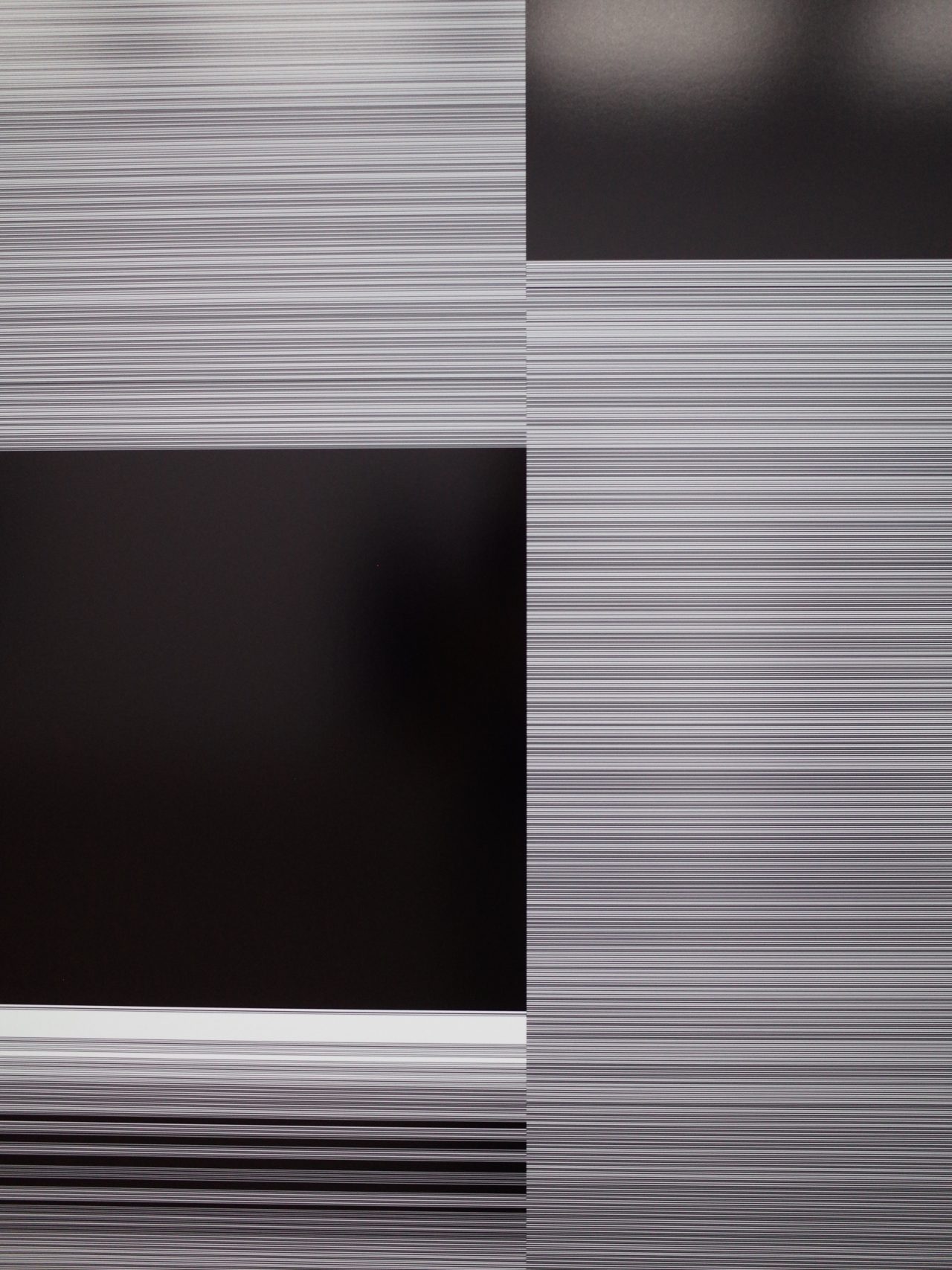
The exhibition begins with a series of never-before-seen framed notes and sketches as artist manuscripts that provide insight into Ikeda’s concept formations and mathematical explorations. In the following space, we find a pulsating black circle with white noise fills the room, titled Point of No Return. Ikeda first created the work in 2018, which coincided with the anniversary of the discovery of black hole. On the opposite side, a blindingly bright white light emits in exact manner, yet made from HMI light which discharges light as bright as the sun. Together, the double-sided works create a ying/ yang effect. The circular works create an Anish Kapoor-like optical illusion, taking you into their abyss, where you’re transfixed into their endlessness.
The second room presents monochromic data-driven formations, creating their own visual language that is presented as digital prints. The configurations are the result of information data derived from NASA materials to mineral data and even real-world data such as DNA sequences. As a loud buzz hums from the approaching room, a 30m-wide screen projects code-verse, a 2018 audiovisual installation accompanied by an amalgamation of white noise to electronic sounds. As pixels rotate, morph and recalculate on the screen in various patterns, the work creates a juxtaposition of both zen-like harmony and sense of apprehension, instigating emotions of calm and anxiety, surety and uncertainty to suspense and security. The detailed data-driven algorithms are mesmerising, producing an equally aesthetically beautiful presentation of monochromatic waves.
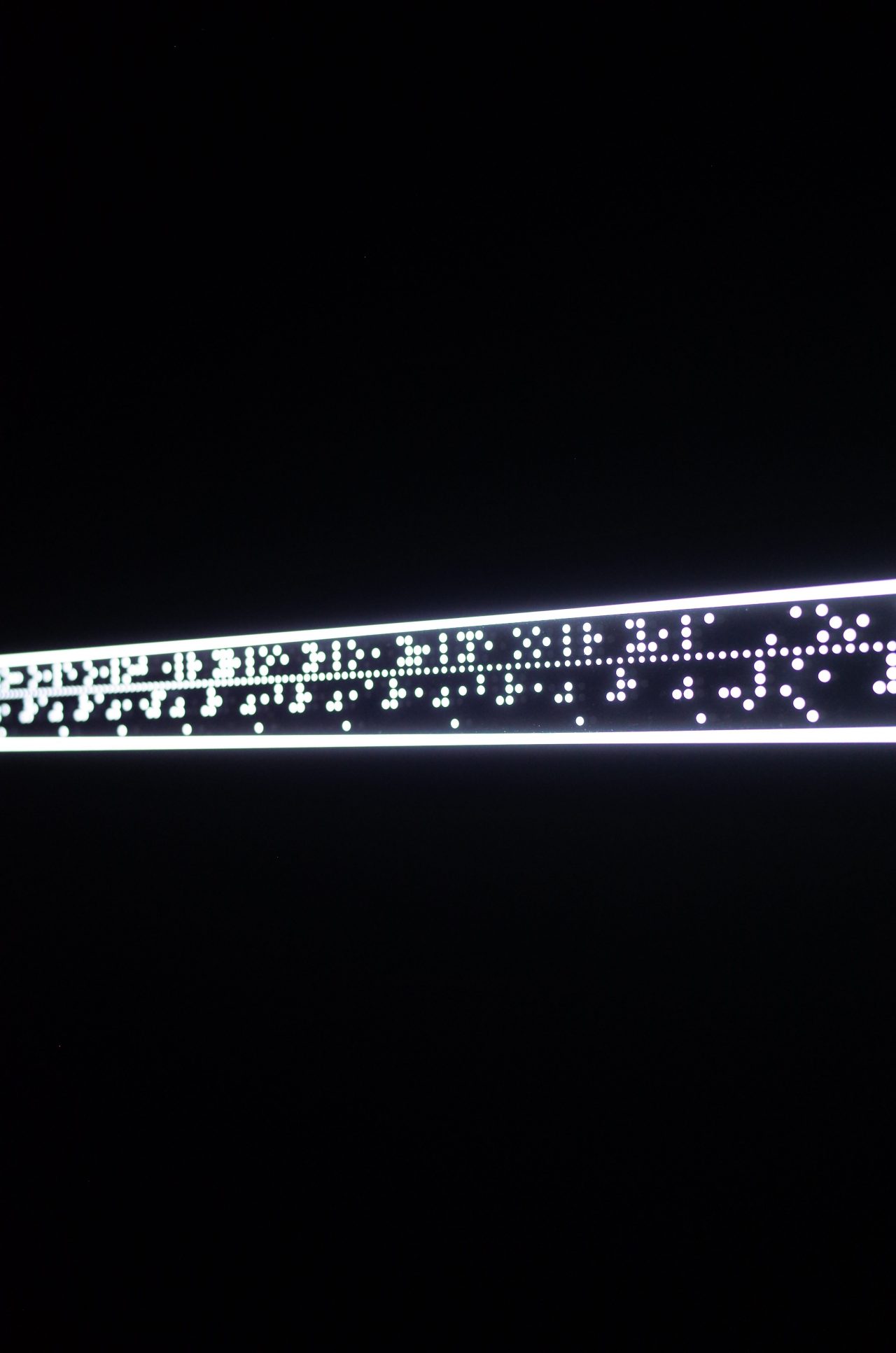
If one could enter the mind and visualise a matrix, it would be the closest find. In his work, Ikeda highlights the concept of the universe. It transports you to the reality that we are made up of pixels and data signals, wave and energy transmissions. He explains his intentions as the “composer”; “Eventually I made a certain composition that could be navigated and give visitors a great journey through the ‘fundamentals of the universe’”.
Although the most immersive, it’s impossible to restrict Ikeda’s work to his large-scale audiovisual installations. He crosses 2D, to sculpture, to live performances that are all-encompassing in the same thread. We soon find his light box works in a dark room, both abstract and familiar with repetitive strokes and fragments. Morse code to braille are presented in a scale-like format, almost as if they ascending and descending scales in a musical composition.
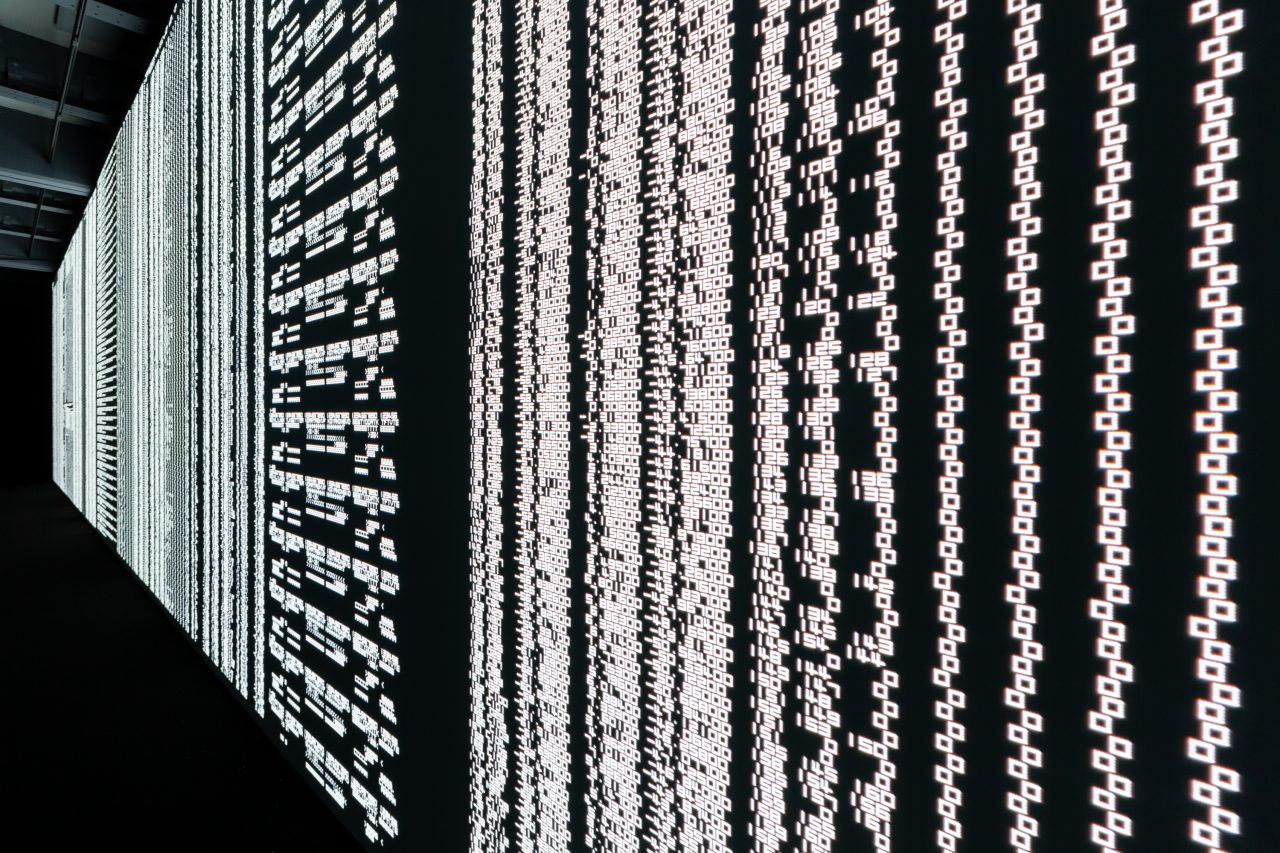

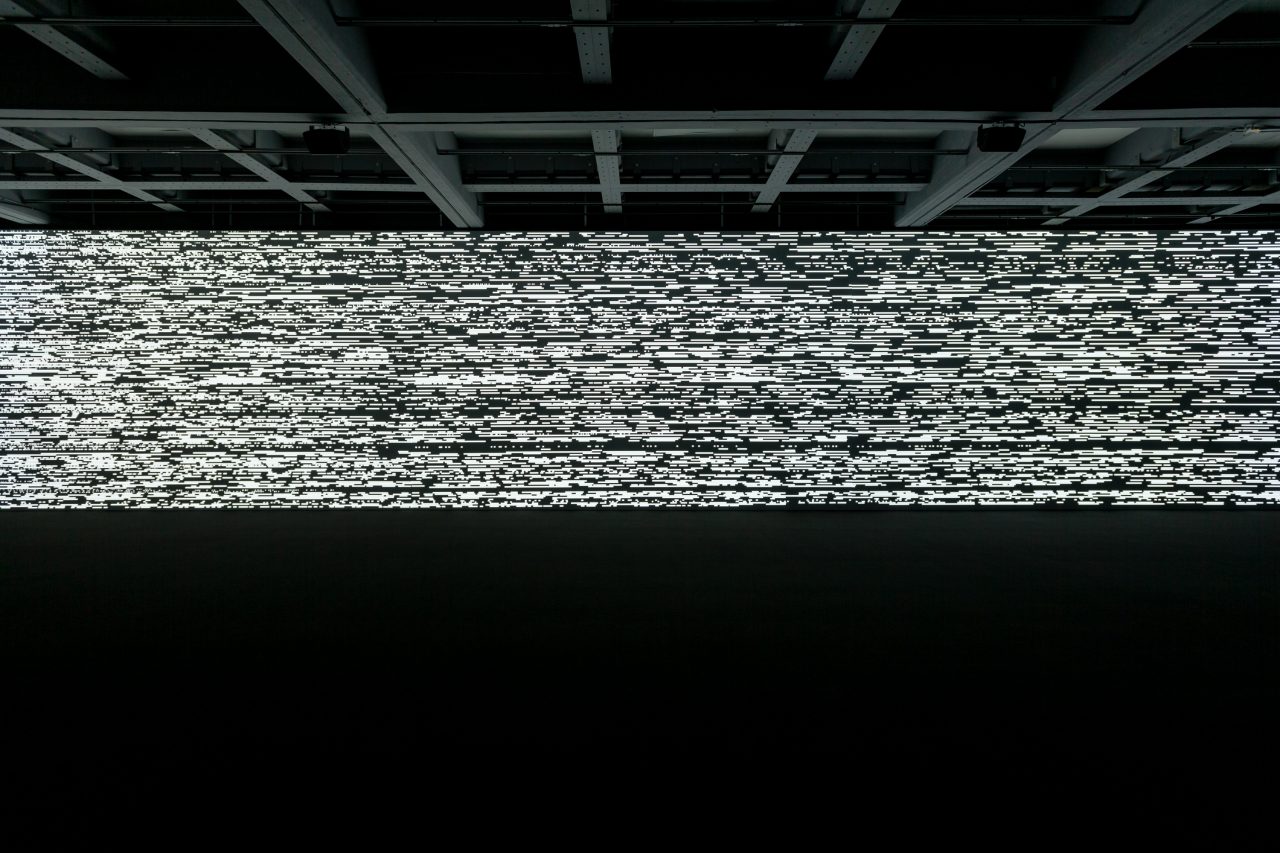
In the final room, an imposing large-scale audiovisual installation titled The Planck Universe [Macro] presents a composition of the boundlessness of the universe from various data media and fragments. The work was conceived during Ikeda’s residency at CERN (European Organisation for Nuclear Research) in Geneva in 2015. Although mostly monochromatic, here however we find blood-red pixels embedded in visual data sequences that circle back to the concept of the Planck length (an infinite unit in physics that explores humankind potential capacity to perceive the natural world at scales both large and small.) The work provides a sense of enlightenment where we find ourselves as a simple fragment in the cosmos and the greater unknown. However it also provides a poignant and heightened sense of alarm in being in relation to todays society. Many own reasonings can be concluded in the work; from our current state of information-overload, to data-corruption and misuse.
Busy with abstract motions, Ikeda still remains practical about his artist output, free of meaning, and abolishes any philosophical conclusions. He explains, “It’s very important for art not to have a message, because I don’t want to take that freedom from viewers. Everyone, from children to adults, all have their own experience.”
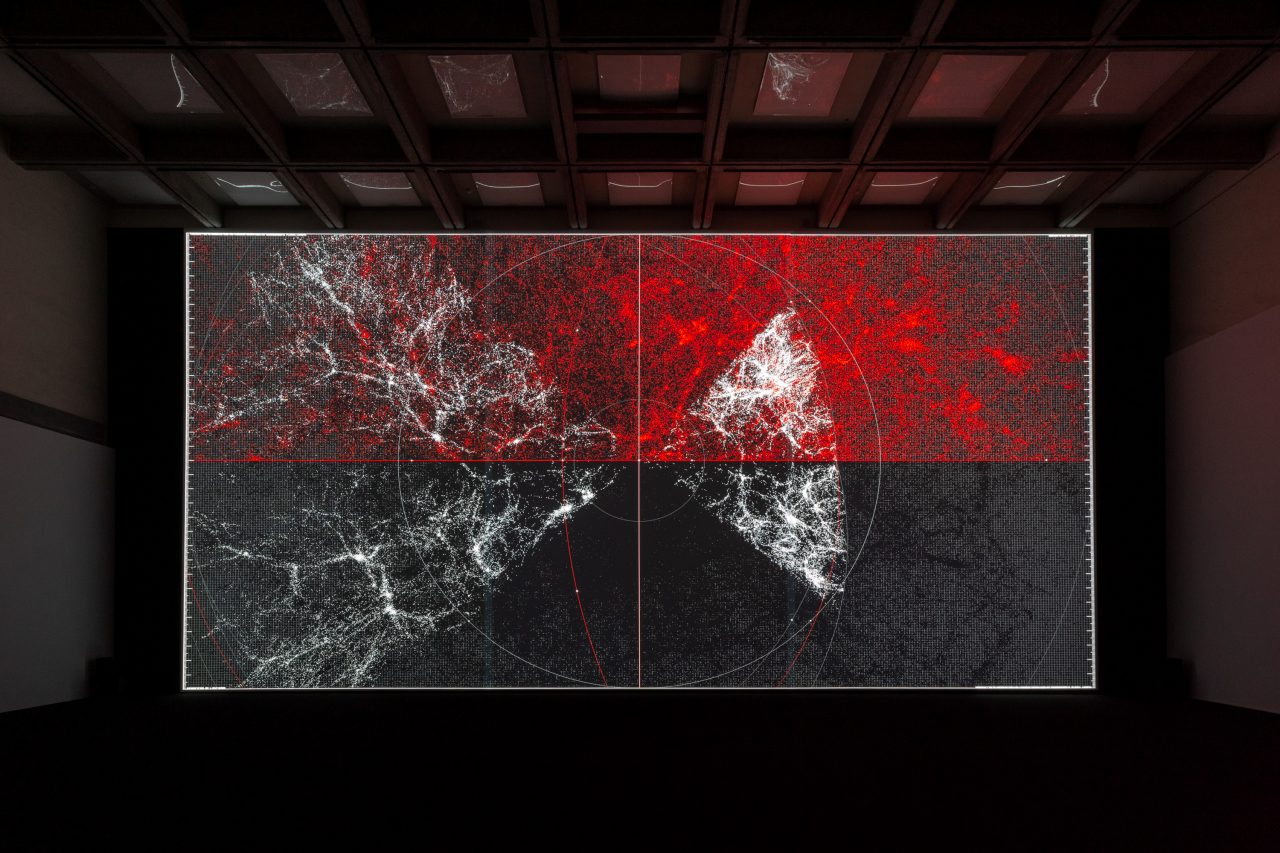
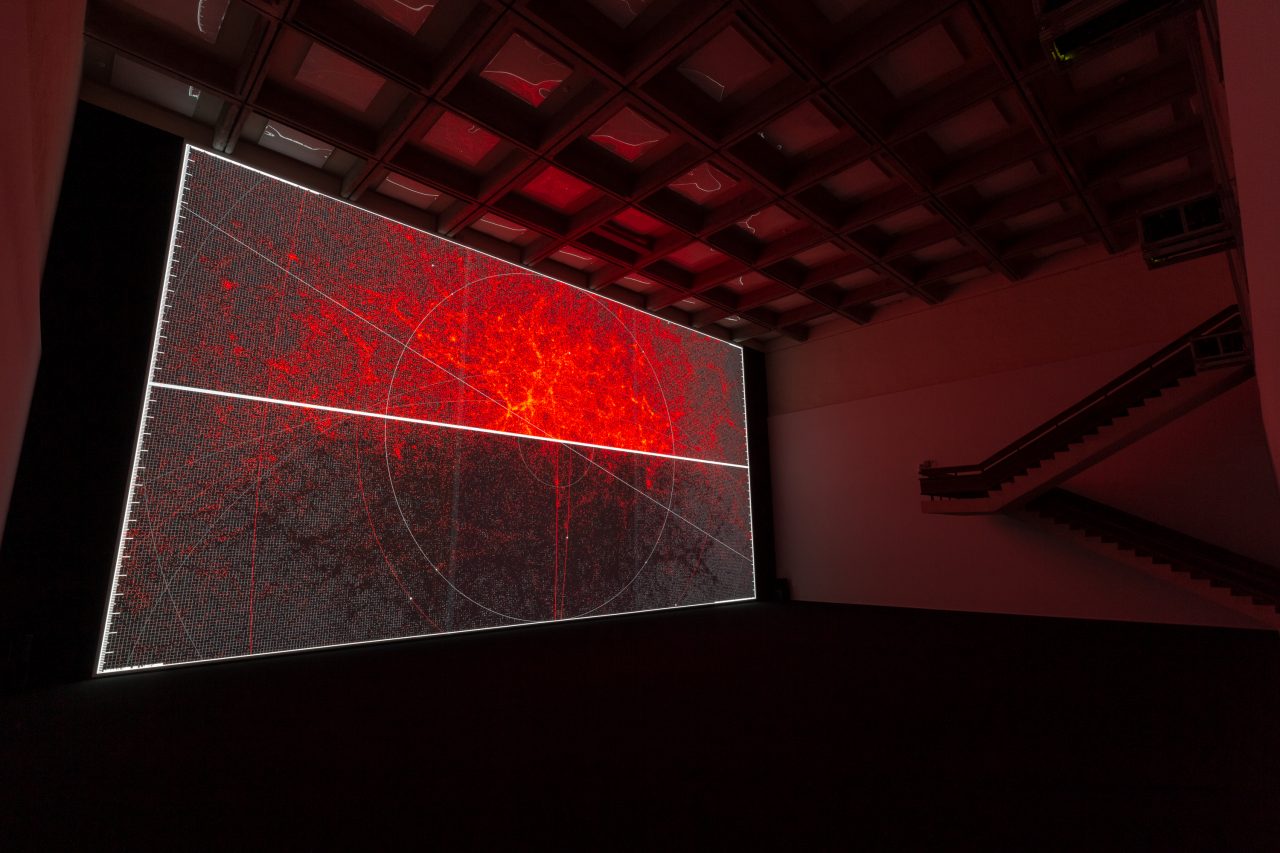
It is indeed all about experience, and one of Ikeda’s works that is undeniably transportive is his Live DJ sets. Two performances were held on the exhibition’s opening evening to sold-out crowds, where a full-capacity outdoor courtyard projected his hypnotic visuals in sync with his own experimental sounds. Where instruments or techniques are hard to detect, its possible to identify elements of techno to beat boxing, made from white noise or electronic configurations. Although truly unconventional, it is an orchestrated concert of sound and visuals, and a performative art piece with vibrations so deep that will penetrate your whole body. Truly an experience like no other.
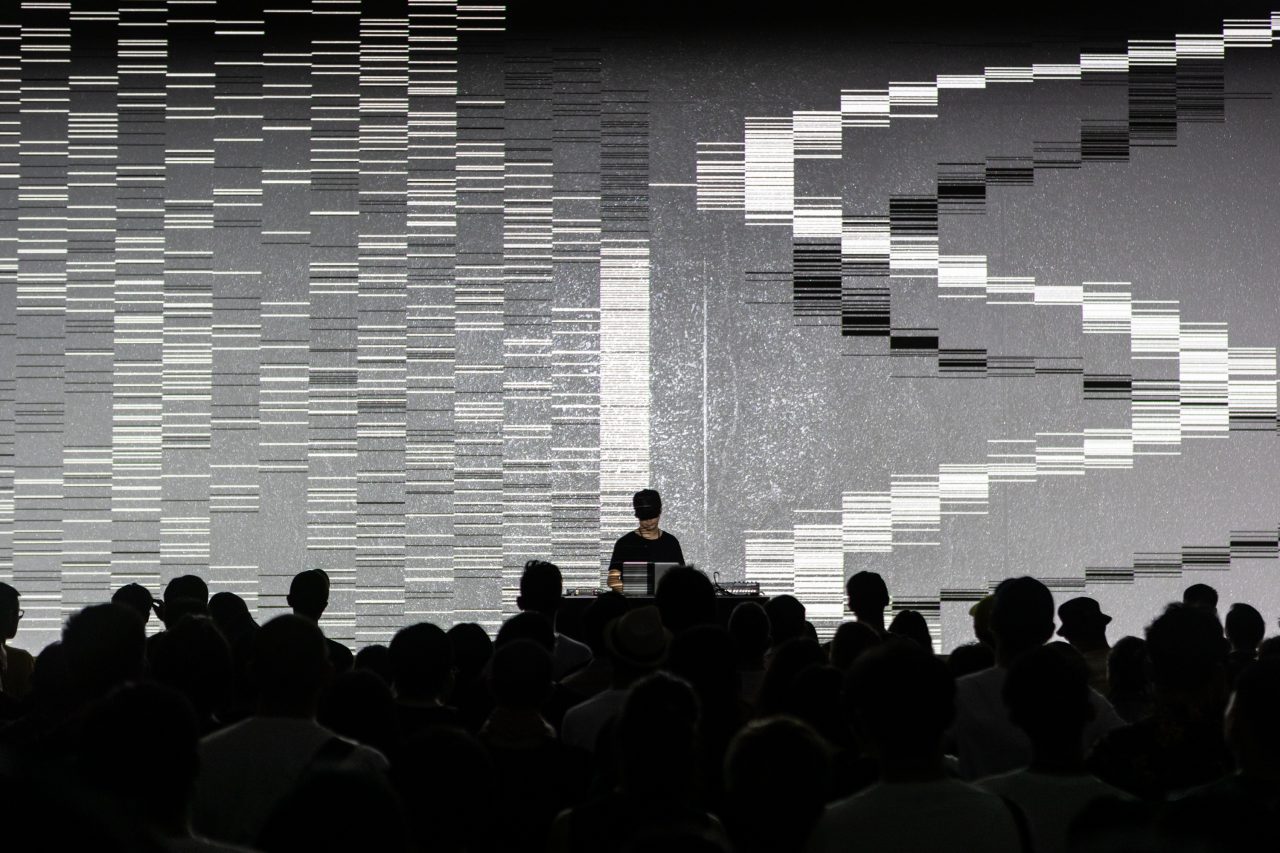
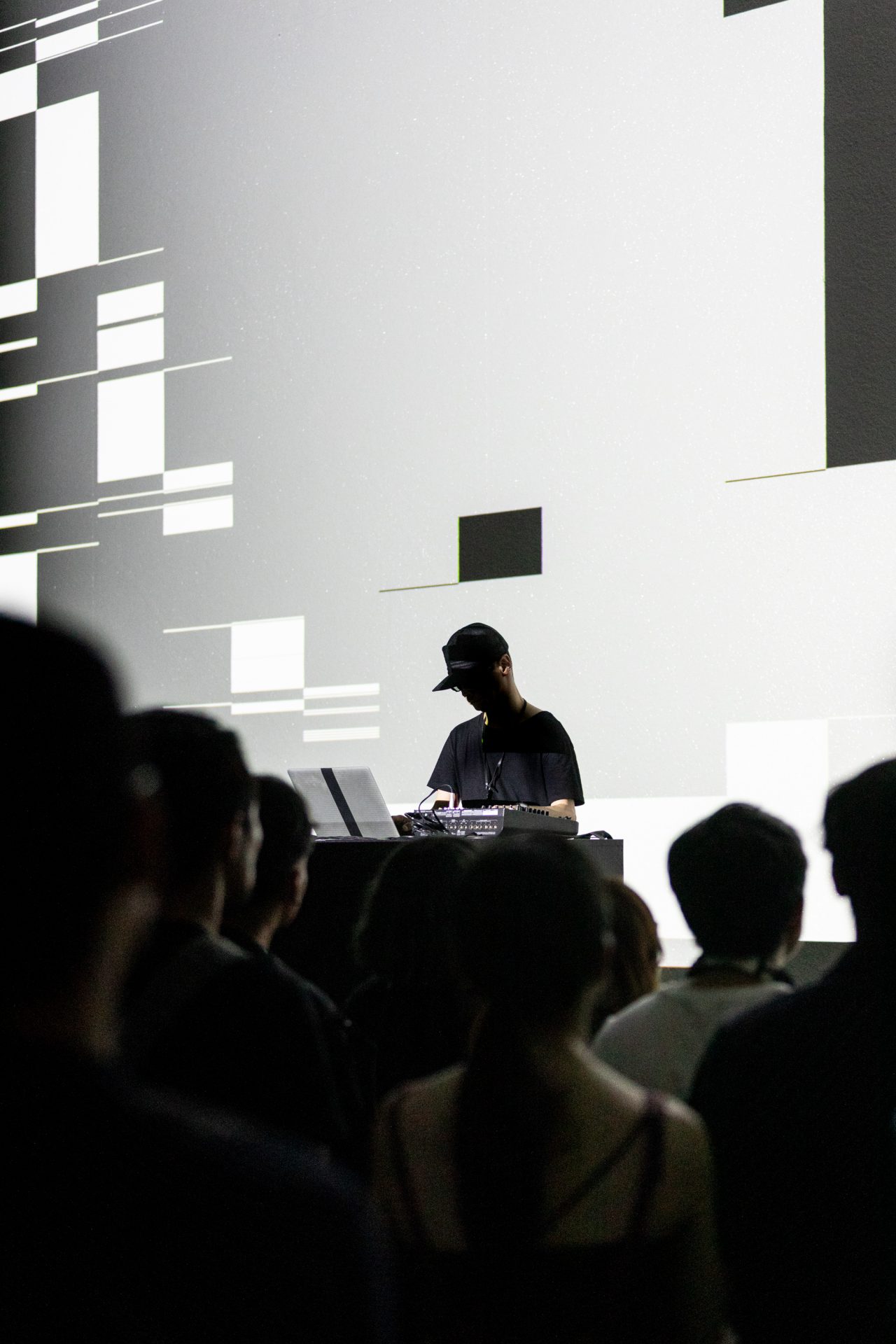
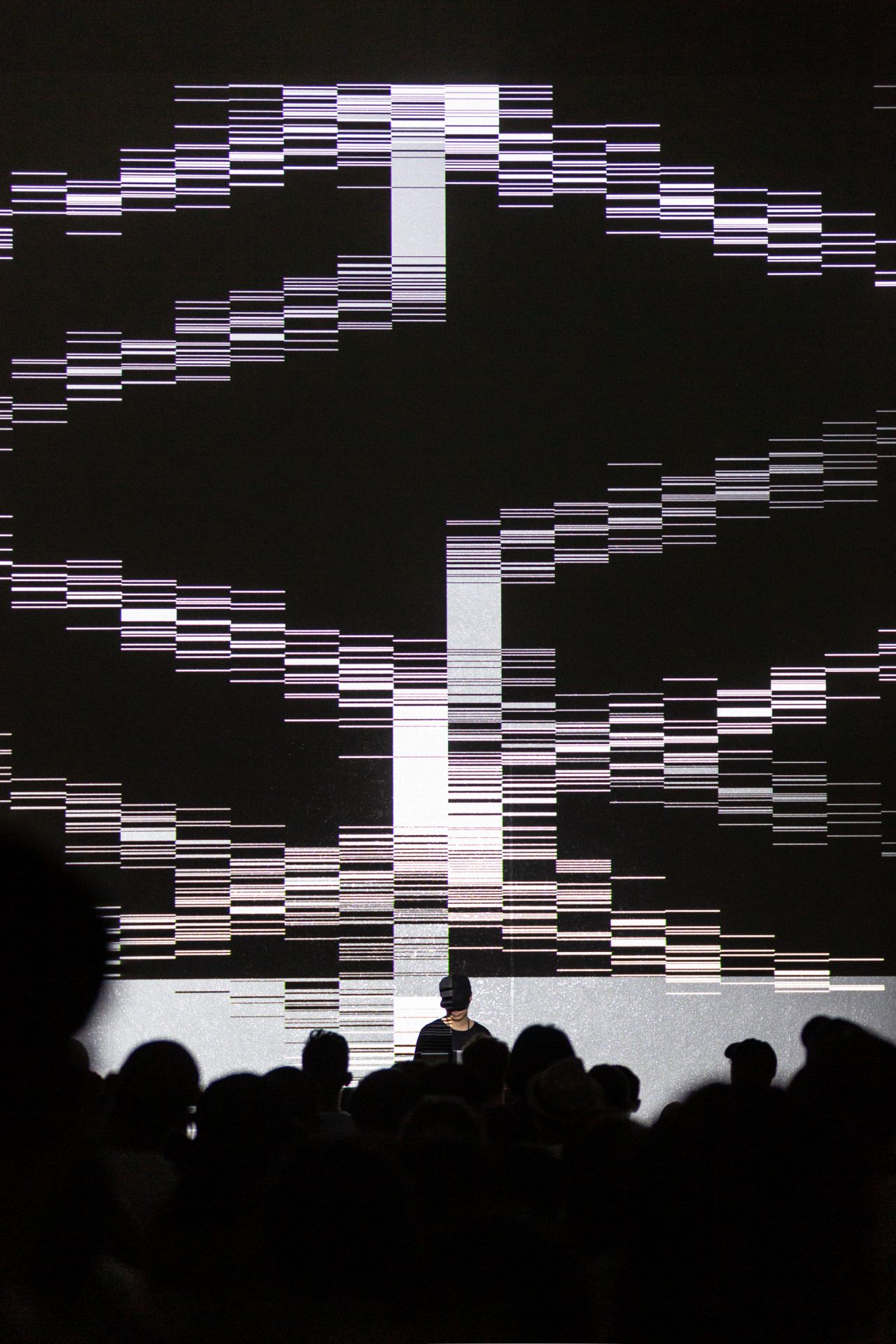
Ryoji Ikeda Solo Exhibition
10 August – 17 November, 2019
Taipei Fine Arts Museum
Taipei, Taiwan
________
Writer: Joanna Kawecki
Photography: Courtesy TFAM


















